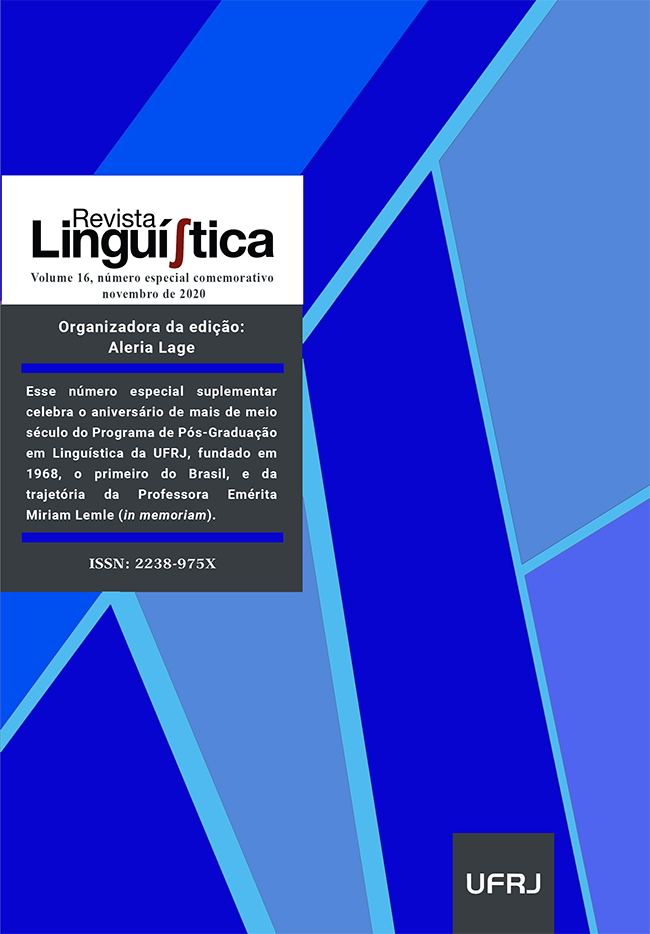Contributions of formal semantics to native language teaching: the nominal quantity
DOI:
https://doi.org/10.31513/linguistica.2020.v16nEsp.a37898Keywords:
Nominal phrase, mother language teaching (BP), singular vs. plural.Abstract
This article pursues the motto “let us bridge the gap between theoretical linguistic and grammar teaching” (LEMLE, 1984), by offering a new approach to nominal quantity in Brazilian Portuguese (BP) classes, based on formal semantics research. Both grammatical tradition (didactic and reference books) and traditional teaching thrive on a binary opposition between singular and plural, based on morphology. Only the presence or absence of the plural morpheme is tracked, while three other contributors for the number reading remain ignored: (i) the nature of the sentence (generic or episodic), (ii) the structure of the phrase (if it is a bare noun or a determiner phrase), and (iii) if the nucleus is a mass or a count noun. The very licensing of the plural morpheme obeys certain conditions. To get to the quantity interpretation of a noun phrase the whole sentence must be examined, including all variables. One of the limitations of the traditional approach is that it tracks exclusively number of individuals, despising readings as the counting of types and the counting of episodes. Furthermore, it never goes beyond number, ignoring volume, abundance, and intense readings. Although plural is marked in morphology, in semantics singular is the marked one. Nominal quantity interpretation is a complex and rich, and the present treatment given to it in schools and teaching materials does not take good care of the topic.
Downloads
Published
Issue
Section
License
Authors who publish in the Revista Linguí∫tica agree with the following terms:
The authors maintain their rights, ceding to the journal the right to first publication of the article, simultaneously submitted to a Creative Commons license permitting the sharing with third-parties of published content as long as it mentions the author and its first publication in the Revista Linguí∫tica.
Authors may enter into additional agreements for the non-exclusive distribution of their published work (for example, posting in online institutional or non-profit repositories, or book chapters) so long as they acknowledge its initial publication in the Revista Linguí∫tica.

The journal Revista Linguí∫tica is published by the Post-Graduate program in Linguistics of UFRJ and employs a Creative Commons - Attribution-NonCommercial 4.0 International (CC-BY-NC).









